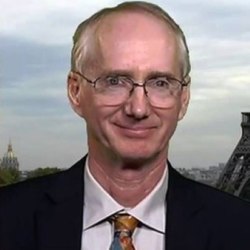Economic Bubbles #1 – Why Living in a Post-Bubble World Is No Fun
What do we do when the bubble economy cannot be reflated?
It is generally conceded that we are living in an era of Peak Everything: peak central bank omnipotence, peak powerless of the non-elites, peak wealth inequality, peak media-induced delusion, peak market-rigging, peak bogus official statistics, peak propaganda, peak bread and circuses, peak deception, peak distraction, peak sociopathology, peak central statism, peak debt, peak leverage, peak derealization–need I go on?
Bubbles reach extremes and then they pop. There is nothing mysterious about this causal chain: peaks generate extremes that manifest as bubbles, which eventually implode as extremes revert to the mean and mass delusions are shattered by the unwelcome reality that extremes are not sustainable.
The status quo solution to the devastation of a popped bubble is to inflate another even bigger bubble. If debt reached extremes that imploded, the solution is to expand debt far beyond the levels that caused the implosion.
If fudging the numbers triggered a loss of confidence, the solution is to fudge the numbers even more, so they no longer reflect reality at all.
If gaming the system crashed the system, the solution is to game the system even harder.
If the masses protest their powerlessness, the solution is to push them further from the centers of power.
And so on.
This blowing new bubbles to replace the ones that popped works for a while, but at the expense of systemic stability. Each new bubble requires pushing the system to new extremes that increase the risk of instability and collapse.
In other words, the stability of the new bubble is temporary and thus illusory.
The processes used to inflate the new bubble suffer from diminishing returns. The nature of stimulus-response is that overuse of the stimulus leads to diminishing responses. This is a structural feature that cannot be massaged away.
Goosing public confidence in the status quo with phony statistics and rigged markets works splendidly the first time, less so the second time, and barely at all the third time. Why is this so? The distance between reality and the bubble construct is now so great that the disconnection from reality is self-evident to anyone not marveling at the finery of the Emperor’s non-existent clothing.
The system habituates to the higher stimulus. If the drug/debt has lost its effectiveness, a higher dose is needed. This is the progression of serial bubbles. Then the system habituates to the higher dose/debt, and the next expansion of debt must be even greater.
This dynamic can be visualized as The Rising Wedge Model of Breakdown, which builds on the well-known Ratchet Effect: the system enables easy expansion of debt, leverage, employees, etc., but it has no mechanism to allow contraction. Any contraction triggers systemic collapse.
When the system’s ability to inflate another bubble breaks down, it’s no longer fun.It’s no longer fun to be a consumer when credit is no longer free, it’s no longer fun to be a politco when the money spigot is no longer wide open, it’s no longer fun to be a market rigger when the markets have imploded, and so on.
It is generally conceded that the global economy is currently experiencing a third bubble. The first expanded in the 1990s and popped in 2000, the second one expanded in 2002 and burst in 2008, and the third one inflated in 2009 and has yet to implode.
We can anticipate the popping of this third bubble, and this opens a line of inquiry few have taken: what if the popping of this third bubble breaks the bubble inflation machinery? In other words, what if there can be no fourth bubble to bail out the status quo, due to the systemic limitations of bubble-blowing as a solution to previous bubbles popping?
Given that we’re still in Peak Central Bank Omnipotence, it is widely believed central banks can continue inflating bubbles of confidence, assets, debt and consumption at will, essentially forever.
But what if the fourth bubble can’t reach the heights of the third bubble? What if the debt and leverage required to inflate the fourth bubble breaks down before the fourth bubble can even reach the heights needed to make everyone who bet the farm on the status quo whole?
Few dare ask these questions as they raise a terrifying follow-on question: what do we do when the bubble economy cannot be reflated?
* * *
About the Author: Charles Hugh Smith as a writer and financial commentator living in Hawaii. His blog, Of Two Minds.com, is ranked #7 in CNBC’s top alternative financial sites, and is republished on numerous popular sites such as Zero Hedge, Financial Sense, and David Stockman’s Contra Corner. Smith is frequently interviewed by alternative media personalities such as Max Keiser, and is a contributing writer on PeakProsperity.com. This article originally appeared on Smith’s blog, and is republished here with permission.

